Every modern car, bus and tractor is equipped with a heating and ventilation system. One of the most important components of this system is the heater motor. Everything about heater motors, their types and design features, as well as the correct selection, repair and replacement of motors is described in the article.
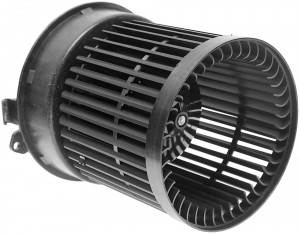
Purpose and role of the heater motor
Interior heater motor (stove motor) is a component of the ventilation, heating and air conditioning system of the passenger compartment of vehicles; A DC electric motor without an impeller or assembled with an impeller that circulates cold and warm air through the system and the cabin.
In cars and trucks, buses, tractors and other equipment, the microclimate in the cabin or cabin is maintained by an air heating and ventilation system. The basis of this system is the heater unit, which contains a radiator, a system of valves and valves, and an electric fan. The system functions simply: the radiator connected to the engine cooling system heats up, this heat is removed by the passing air flow, which is created by the electric fan, then the heated air enters the air ducts to various areas of the cabin and to the windshield. In all vehicles, the fan is driven by a built-in DC motor - the heater motor.
The heater motor assembly with the impeller has several basic functions:
● In cold weather - the formation of an air flow that passes through the radiator of the stove, heats up and enters the cabin;
● When the heater is turned on in ventilation mode, the formation of an air flow that enters the passenger compartment without heating;
● In systems with air conditioners - the formation of an air flow that passes through the evaporator, cools and enters the cabin;
● Changing the fan speed when regulating the operation of the heater and air conditioner.
The heater motor is critical to the operation of automotive heating, ventilation and air conditioning systems, so in case of any malfunction, it must be changed or repaired. But before you go to the store for a new motor, you should understand the existing types of these units, their design and features of work.
Types, design and characteristics of heater motors
First of all, it should be pointed out that the term "heater motor" means two types of devices:
● Electric motor used in electric fans of automobile stoves;
● A complete electric fan is an electric motor assembly with an impeller, and sometimes with a housing.
On various equipment, DC electric motors are used for a supply voltage of 12 and 24 V with a shaft speed of an average of 2000 to 3000 rpm.
There are two types of electric motors:
● Traditional collector with excitation from permanent magnets;
● Modern brushless.
Brushed motors are the most widespread, but on modern cars you can also find brushless motors, which have small dimensions and high reliability. In turn, brushless motors are divided into two types - actually brushless and valve, they differ in the design of the windings and connection methods. The proliferation of these electric motors is hampered by the complexity of their connection - they require an electronic control system based on power switches and other components.
By design, electric motors are of two types:
● Body;
● Frameless.
The most common motors are placed in a metal case, they are reliably protected from dirt and damage, but a closed case makes it difficult to cool. Open frameless motors are less common, and are most often used in conjunction with impellers, such units are light and protected from overheating during operation. On the motor housing there are elements for mounting in the case of a fan or stove - screws, brackets, crackers and others. To connect the heater motor to the electrical system, standard electrical connectors are used, which can be integrated into the product body or located on the wiring harness.
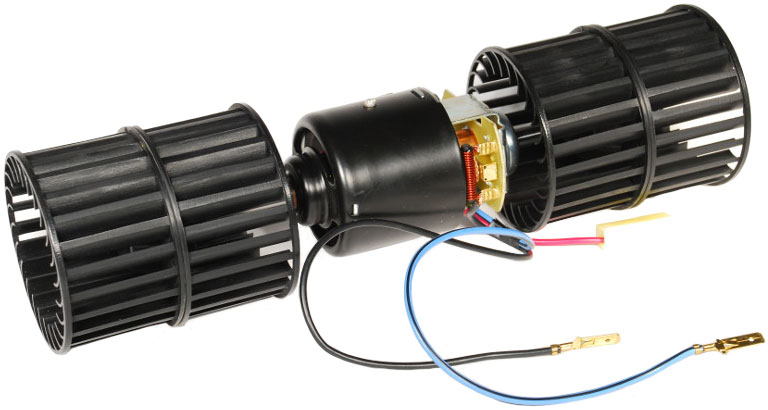
Centrifugal heater motor with two impellers
According to the location of the shaft, electric motors are divided into two groups:
● One-sided shaft;
● Double-sided shaft.
In motors of the first type, the shaft comes out of the body only from one end, on motors of the second type - from both ends. In the first case, only one impeller is mounted on one side, in the second, two impellers located on both sides of the electric motor are used at once.
Motors assembled with an impeller form a single complete unit - an electric fan. There are two types of fans:
● Axial;
● Centrifugal.
Axial fans are conventional fans with a radial arrangement of blades, they form an air flow directed along their axis. Such fans are almost never used today, but they are often found on early cars (VAZ "Classic" and others).
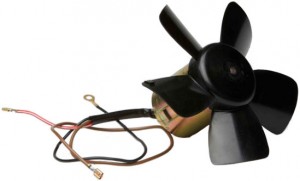
Axial type heater motor with fan
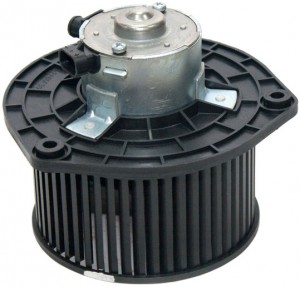
Centrifugal heater motor with impeller
Centrifugal fans are made in the form of a wheel with a horizontal arrangement of a large number of blades, they form an air flow directed from the axis to the periphery, the air moves in this way due to the centrifugal forces arising from the rotation of the impeller. Fans of this type are used on most modern cars, buses, tractors and other equipment, this is due to their compactness and high efficiency.

The device of the axial type cabin heater
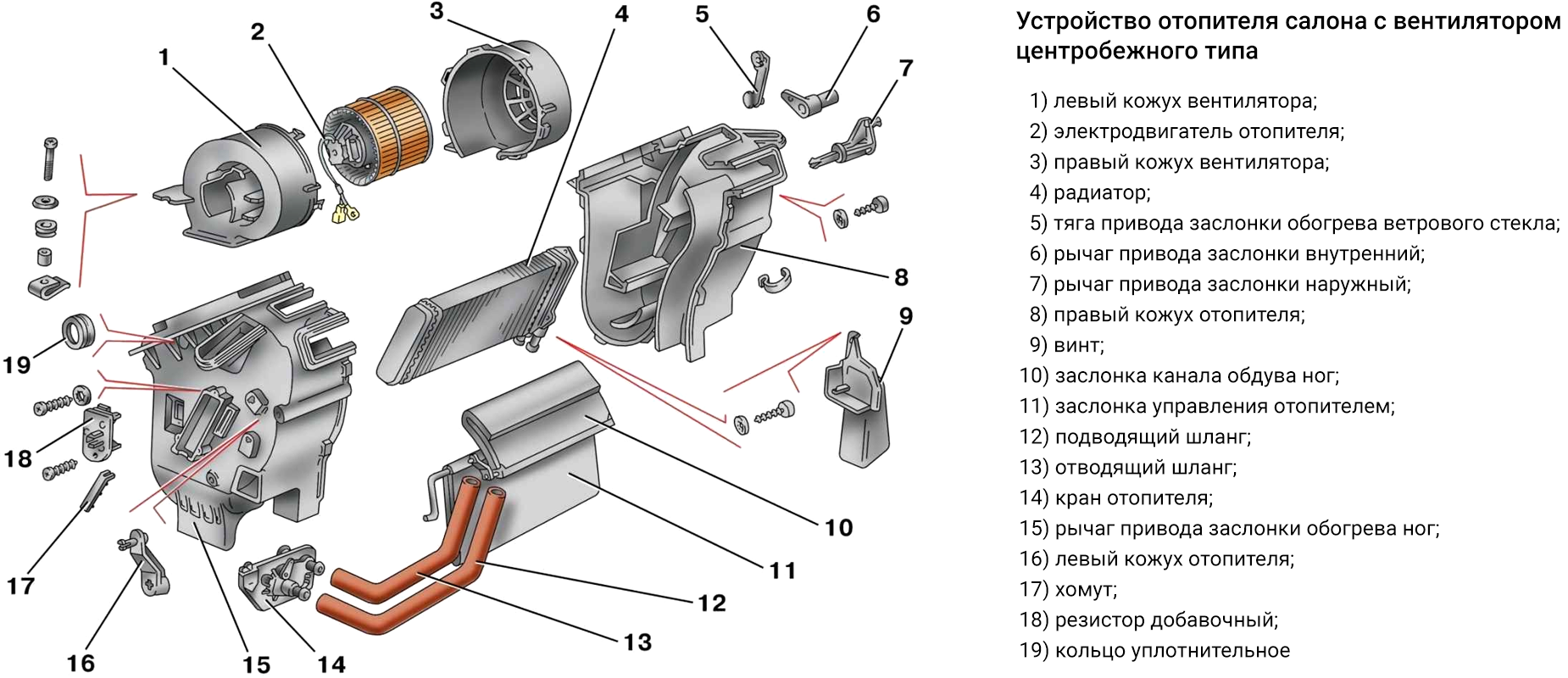
The device of the centrifugal type cabin heater
There are two types of centrifugal fan impellers:
● Single-row;
● Two-row.
In single-row impellers, the blades are arranged in one row, all blades have the same design and geometry. In two-row impellers, two rows of blades are provided, and the blades are located in rows with a shift (in a checkerboard pattern). This design has a higher rigidity than a single-row impeller of the same width, and also ensures uniformity of the air pressure created by the impeller. Often, one row of blades, located on the side of the electric motor, has a smaller width - this increases the strength and rigidity of the structure in places of the greatest stresses, and at the same time provides better cooling of the engine.
In centrifugal fans, the motor and impeller can have different relative positions:
● The motor is separated from the impeller;
● The motor is partially or completely located inside the impeller.
In the first case, the impeller is simply put on the motor shaft, while the engine is not blown by the air flow from the impeller. This is the simplest design, which is often used on domestic trucks.
In the second case, the motor housing partially or completely goes inside the impeller, which reduces the overall dimensions of the unit, and also provides better heat dissipation from the electric motor. Inside the impeller, a smooth or perforated cone can be made, thanks to which the air entering the fan is divided into separate streams and directed to the blades. Usually, such structures are made in the form of a single unit, which is replaced only in the assembly.
Depending on their types and design, automobile stove motors are supplied to the market without impellers or assembled with impellers, and centrifugal fans can also be sold assembled with housings ("snails"), which greatly facilitates their installation.
How to choose and replace the heater motor
Heater motors are characterized by various types of malfunctions: loss of electrical contact in joints and wires, wear of brushes in commutator motors, short circuits and open windings, jamming and loss of speed due to destruction of bearings or deformations, damage or destruction of the impeller. With some malfunctions, the stove continues to work, but with less efficiency, but sometimes it completely ceases to function. Often, malfunctions are accompanied by extraneous noise from the heater, and in modern cars with a self-diagnosis system, a corresponding message appears in case of a malfunction. In any case, it is necessary to carry out diagnostics, and, if necessary, replace the heater motor.
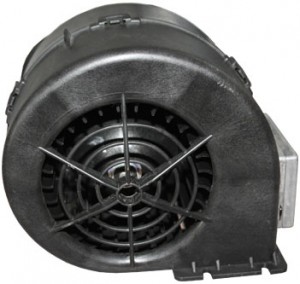
Heater motor assembly with impeller and body (snail)
To replace, you should take the unit that was on the car earlier, or is on the list recommended by the automaker. When buying parts, you need to take into account that often they are not sold separately. For example, many cars are equipped with only a complete unit with a motor and an impeller, and if the impeller breaks down, it is impossible to replace it alone. It is not recommended to use parts or entire assemblies of other types, as they may simply not fall into place and will not ensure high-quality operation of the stove.
Defective parts should only be replaced in accordance with the repair instructions for this car. Often, repair work requires significant disassembly of the dashboard and console, in which case it is better to entrust the repair to specialists. With the right choice and replacement of the motor, the heater will work effectively, creating a comfortable microclimate in the cabin at any time of the year.
Post time: Jul-12-2023
